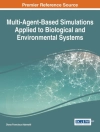The book focuses on all typological aspects of arches and vaults within the heritage of design and construction, while bringing attention to new “green” materials, promoting a circular economy informed by limitations caused by global warming. The multidisciplinary approach involves several different competences in architecture, structural engineering, conservation and restoration, geomatics, BIM, building engineering, the technology and history of construction, graphical methods of assessment, and innovative design that utilizes non-polluting materials. After an overview of the technical and aesthetic advantages of masonry vaults, there is a review of the most up-to-date trends in historic preservation. Classic methods of static assessment and innovative building technologies are detailed. Surveying methods and data acquisition are discussed, particularly laser scanning technology and its applications in heritage masonry curved structures. Next comes the experimental static and dymanicbehavior of masonry vaults, followed by a critical revision of Distinct Element innovative computerized Methods. An explanation as to how to pass from classic stability analysis to an adaptive Finite Element Method limit analysis procedure is offered. Reinterpretation of the past is then undertaken, with an eye towards emphasizing sustainability. Finally, the conclusion examines still existing gaps in knowledge and recommends avenues of future research.
Spis treści
Introduction.- Trends in historic preservation and relevance of understanding curved masonry structures.- Revisiting classic mechanical methods for the equilibrium analysis of masonry arches and domes.- Building without framework.- Documentation, inspection and accurate surveying.
O autorze
Dr. Gabriele Milani is Full Professor at Politecnico di Milano (2019-present), Italy. His research focuses mainly on masonry modeling, safety assessment of historical masonry and limit analysis. He has been awarded with a Telford Premium (2012) by ICE, a Bathe Award (2014) and a most cited author award for a paper in Computers and Structures (2006). He has co-authored more than 200 indexed papers and he served as editor for 2 books on masonry. He co-chaired the 10th International Masonry Conference IMC10 in 2018.
Dr. Vasilis Sarhosis is an Associate Professor in Structural Engineering at the University of Leeds. His research focuses on understanding the long-term behaviour of masonry infrastructure subjected to natural and man-made hazards. He performed research projects in Nepal, Greece, Italy, Japan, Iraq and the UK. Dr. Sarhosis is a Chartered Engineer (CEng), Fellow of the Institution of Civil Engineers (FICE) and Fellow of the Higher Education Academy (FHEA) in the UK. He is currently chairing the National Scientific Committee on the Analysis and Restoration of Structures of Architectural Heritage (ISCARSAH-UK), which is part of the ICOMOS UK. He has published more than 120 peer-reviewed journal manuscripts and his research has been cited more than 2, 500 times.












